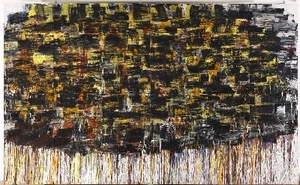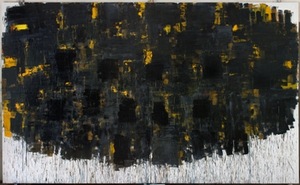Incogitable landscape 0
In brief: Lithuanian abstract painting was popular and demanded diversity in the second half of the 20th century. After being unacceptable for a long time, it found several ways to squeeze into official exhibitions (in times of late Soviet years) and minds of viewers.
First it was the sudden deformation of boring realism, its fragmentation and generalisation to hardly understandable dreams and poetics of diaries. Another method was the transformation of the classical colouristic landscape by vanishing the main colours and schemes of perspective.
The painter Henrikas Čerapas was one of the first artists who started destroying the view of the traditional still-life – aloe on windowsill. Gradually Čerapas changed sizes of paintings and plastic means, the development of a particular view and its disappearance up to infinity. People interested in art could observe this change in works of the artist in joint painting exhibitions of the group Angis.
Today we see twelve paintings created by Henrikas Čerapas during the latter decade in his solo show “On One’s Own on the Road”. Still, this is where the tracing of history of painting ends as canvases of Čerapas do not want to line in the chronological order (from 2004 to 2013) or according to the theme.
These paintings are completely different – each of the works may be approached as a separate hermetic zone, although sometimes notes lead to some more general interpretations. Associations are created by duplicated titles in some paintings (e.g., “Darkness Darkness / Love Garden of a Young Guitarist” or “The Last Day of My Future / Good Friday”). Others require a huge size (e.g., 330 x 540 cm) or effective colour borrowed not from the palette of the painter.
These sizes as well as the viewer‘s emotions enable to return to concepts of the infinity, disappearance or even explosion. Black colour is the main narrative that forms fragmented stories about meadows, graves, marshes or quagmires, it sucks the viewer to a different perspective and creates the illusion that it is a still of a film which will end soon.
Exhibition “On One’s Own on the Road” of Henrikas Čerapas may be visited at Kaunas Picture Gallery until June 29.










